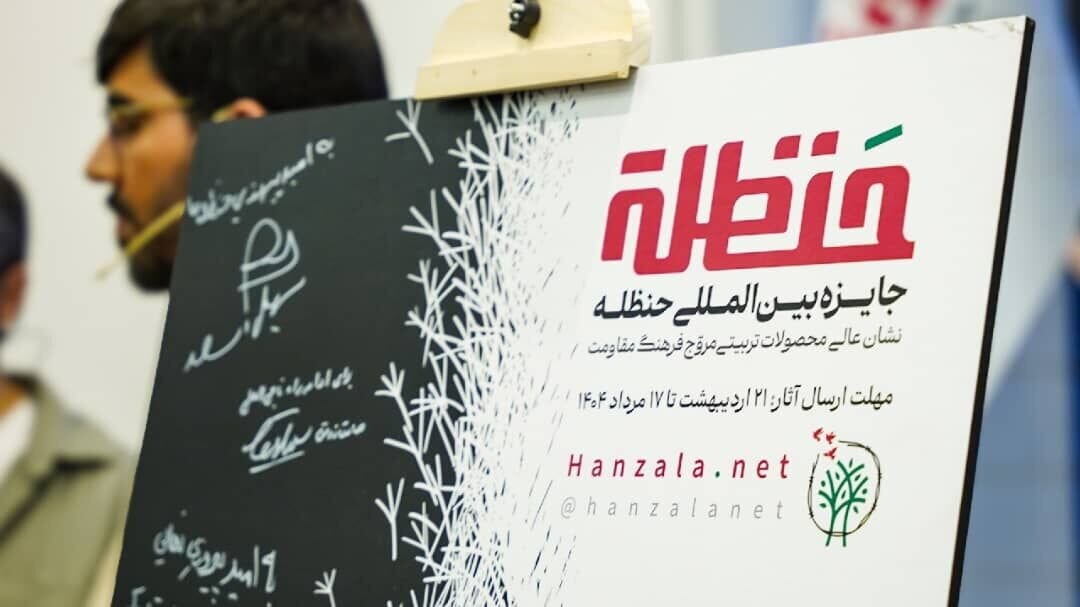International Hanzala Prize focuses on children’s literature, resistance narrative

TEHRAN – The International Hanzala Prize, a prestigious literary and cultural award, is set to prioritize children's and adolescent literature exploring themes of resistance, the organizers have announced.
The prize, aiming to foster cultural production for young audiences, will assess submissions across diverse media, IRNA quoted Sadeq Zufan, the Scientific Secretary of the event as saying in a press conference held in Tehran on Monday.
He detailed the scope and procedures of the competition and outlined the five key categories for submission: books, toys, computer games, activity packages, and creative educational media.
"Our primary focus is on works specifically designed for children and adolescents. We seek to nurture a narrative of resistance through the lens of culture and creativity," he emphasized.
The prize is not merely an award ceremony but a platform to encourage innovation and artistic expression among young creators, he added.
He highlighted the vital role of cultural production in shaping the values and perspectives of the next generation. The aim is to create engaging and thought-provoking content that resonates with the unique sensibilities of children and adolescents while simultaneously instilling the spirit of resistance.
Elaborating on the selection criteria, Zufan explained that the judging panel will evaluate each submission based on several key factors. "Creativity, originality, and the effective conveyance of the resistance narrative are paramount," he stated. "Furthermore, we will assess the educational value of each work and its potential to inspire and empower young minds."
The International Hanzala Prize is now open to submissions from around the world. Zufan emphasized the international nature of the competition, aiming to foster collaboration and exchange among creators from diverse cultural backgrounds. "We believe that the exchange of ideas and experiences is crucial for fostering creativity and innovation," he stated. "The diverse voices of young creators will be instrumental in shaping the narratives of resistance."
Following the judging of submissions by mid-September, the closing ceremony will be held, he said and added: “However, unlike other festivals, the closing ceremony for us is not the end of the journey; it is the beginning of a support phase for the winning works. Financial support, publishing, marketing, and international development will be part of our program for the selected products.”
He also announced a prize of 32,000 Euros in cash for the winning entries. “We do not limit this prize to Iran. We are currently engaging in consultations with cultural activists in Lebanon, Syria, Yemen, and some African countries. This is a global cultural initiative.”
Vahid Vali, Secretary General of the Hanzala Prize, referred to recent regional developments and the awakening of global consciousness regarding the crimes of the Zionist regime. He stated, “A major event has occurred in the world that cannot be overlooked. During the Al-Aqsa Storm, in the heart of a land that had been lost multiple times, a movement began that overturned all calculations. This was not just a military operation; it was a redefinition of the true meaning of resistance.”
“The Zionist regime, with all its media and political tools, tried to erase Palestine from the global memory. However, today, it has once again become the foremost issue for the Islamic world and even free nations worldwide. This demonstrates that the time has come to move beyond traditional forms of struggle. We need new narratives and innovative tools to convey the concepts of resistance.”
“Media and news are only one aspect of the story. We must transform resistance into play, entertainment, and educational tools—things that enter children’s lives and familiarize them with truths they will stand for with their lives in the future,” he mentioned.
This prize was established with that very purpose: to bring resistance from the realm of news into the heart of families and classrooms, he noted.
“We do not merely honor the winners of this prize; we support them, help them produce in large quantities, create markets for their work, and pave the way for their international recognition. For us, this is not just a program; it is a historic necessity,” he explained.
For his part, Soheil Asaad, a special guest at the session, focused on the concept of “Hanzala” as the symbol of the prize, revisited the significance of this character.
“Hanzala is not just a cartoon character; he has become a collective conscience. Hanzala embodies a generation that has turned its back on oppression but has not ceased fighting. He reminds us that sometimes silence speaks louder than words. Today, through this prize, we aim to nurture new ‘Hanzalas’—children who learn to stand against injustice through toys, books, and educational games.”
The International Hanzala Prize is expected to contribute significantly to the enrichment of children's literature and cultural production. The emphasis on resistance narratives reflects a broader cultural movement aimed at nurturing a generation equipped with critical thinking skills and a commitment to social justice. The prize further aims to support the development of creative talent and provide a platform for young writers, artists, and designers to showcase their work to a global audience.
Hanzala is a powerful symbol of Palestinian identity and resistance, created in 1969 by cartoonist Naji al-Ali. First appearing in 1969 and adopting its iconic pose in 1973, Hanzala is depicted as a ten-year-old boy with his back turned and hands clasped behind him, representing the innocence and steadfastness of the Palestinian people.
The character’s age signifies al-Ali’s own childhood when he was forced to leave Palestine in 1948. Hanzala’s ragged clothes and barefoot stance symbolize solidarity with the poor and oppressed. Al-Ali envisioned Hanzala as an eternal youth, embodying the ongoing struggle for justice and return.
Despite al-Ali’s assassination in 1987, the character’s image persists globally, adorning walls, tattoos, jewelry, and serving as a symbol in several movements.
SAB/
Leave a Comment